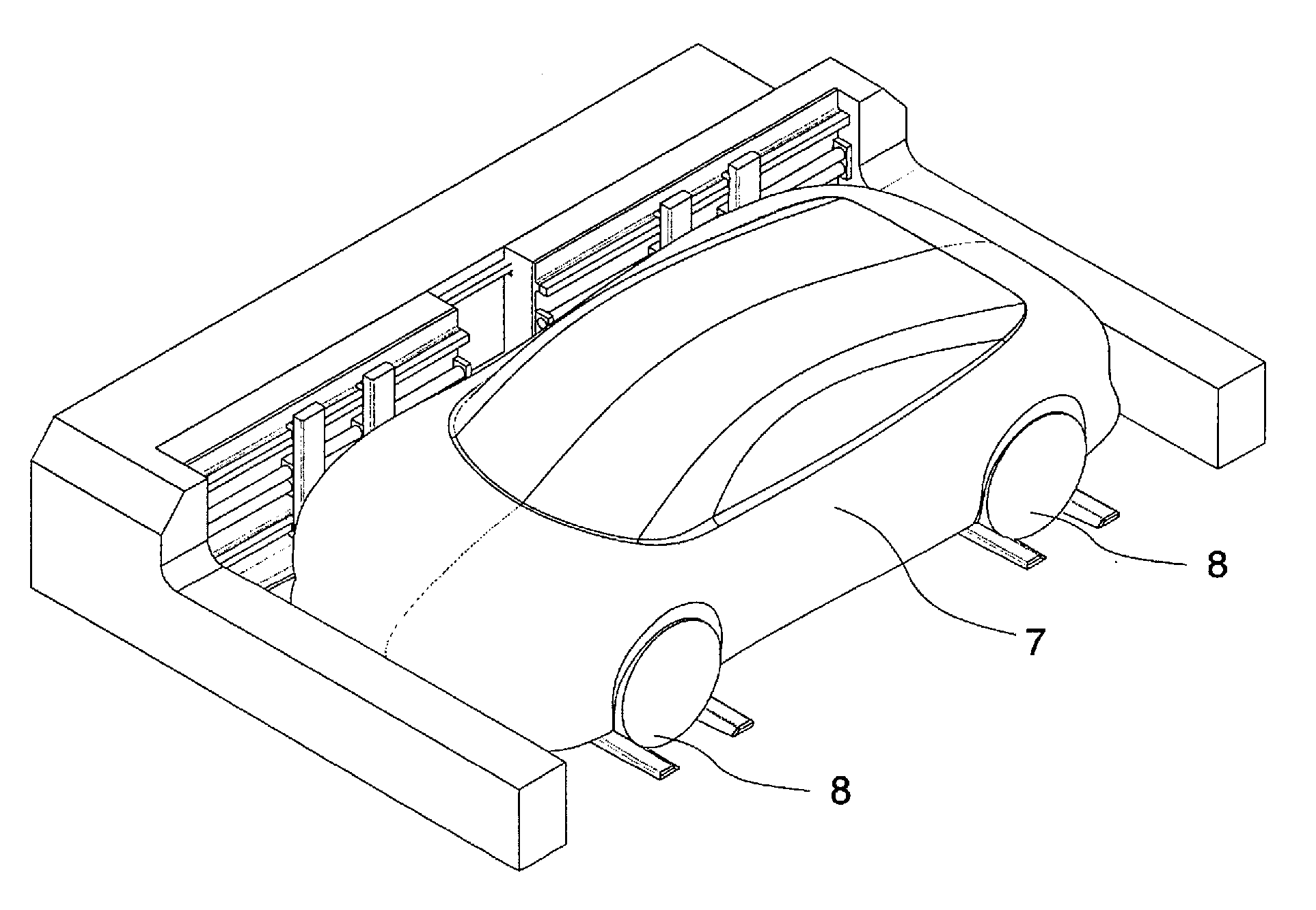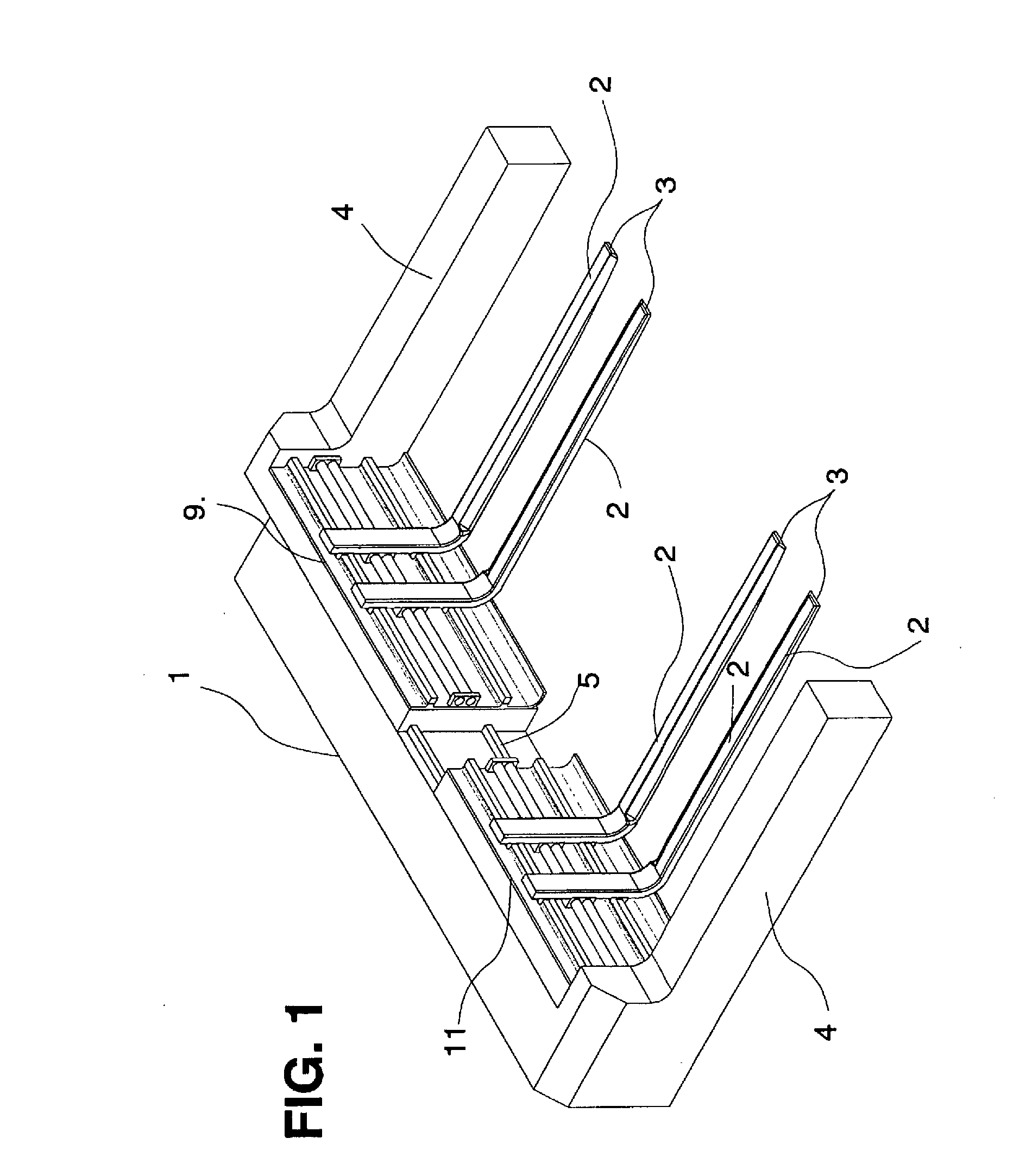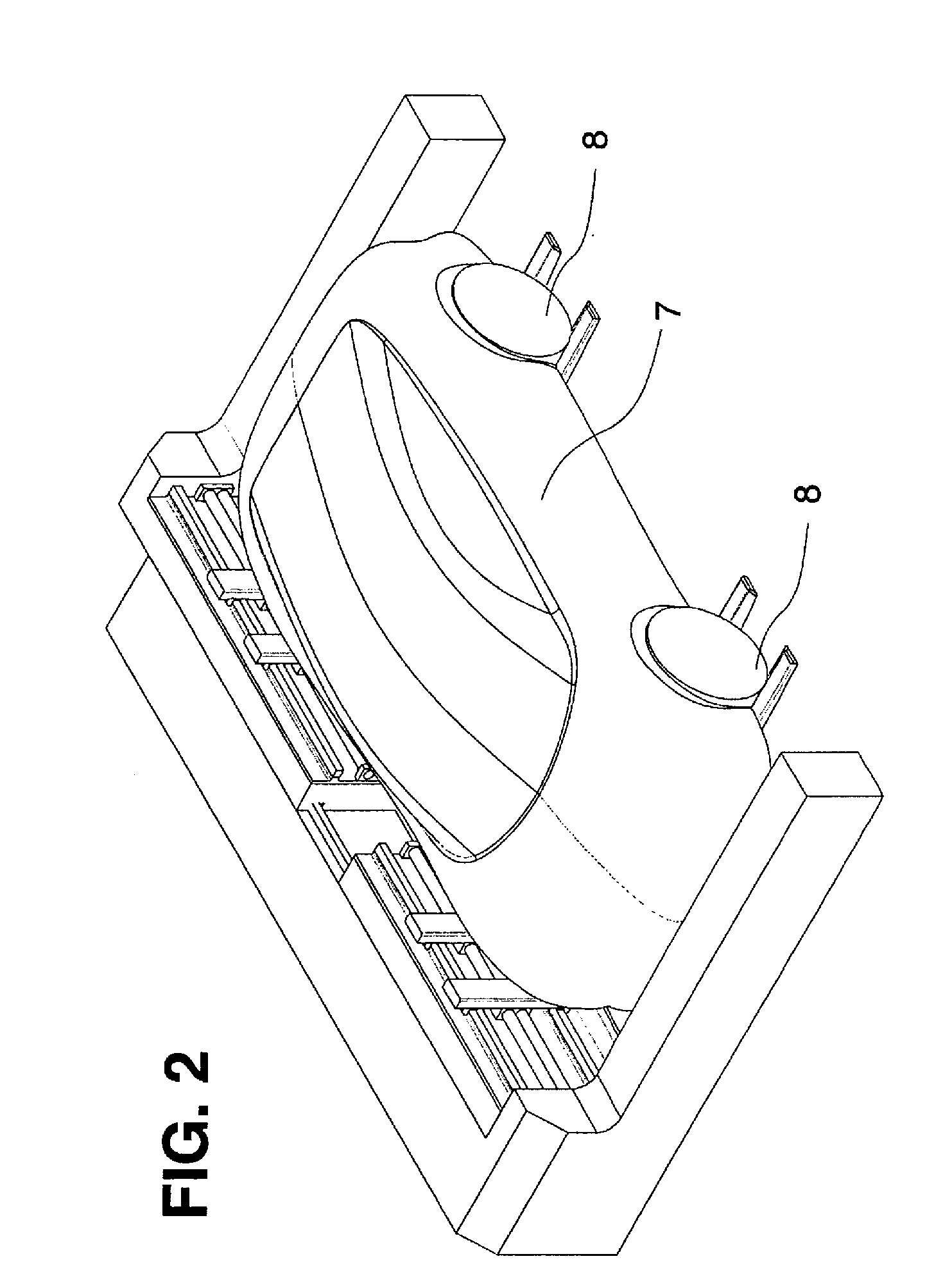Device and method for automatically laterally storing a motor vehicle in a storing device
- Summary
- Abstract
- Description
- Claims
- Application Information
AI Technical Summary
Benefits of technology
Problems solved by technology
Method used
Image
Examples
Embodiment Construction
[0018]An embodiment of the invention is explained in more detail with reference to the drawing. There are shown:
[0019]FIG. 1: A plan view of the surface-maneuverable driverless transporting means
[0020]FIG. 2: A plan view of the surface-maneuverable driverless transporting means with a received automotive vehicle
[0021]FIG. 3: A plan view of the transfer station
[0022]FIG. 4: A plan view of the storage facility
[0023]FIG. 5: A plan view of the surface-maneuverable transporting means with a beam as device for length adjustment
[0024]The surface-maneuverable driverless transporting means (1), represented in FIGS. 1 to 3, has, at its ends which are parallel next to the pairs of forks (3), surface-maneuverable supports (4), which, in addition to the transporting means, absorb a part of the load caused by the automotive vehicle (7) and prevent tilting. The pairs of forks (3) are mounted, on one side, on the surface-maneuverable driverless transporting means (1) and can be displaced individual...
PUM
 Login to View More
Login to View More Abstract
Description
Claims
Application Information
 Login to View More
Login to View More - R&D
- Intellectual Property
- Life Sciences
- Materials
- Tech Scout
- Unparalleled Data Quality
- Higher Quality Content
- 60% Fewer Hallucinations
Browse by: Latest US Patents, China's latest patents, Technical Efficacy Thesaurus, Application Domain, Technology Topic, Popular Technical Reports.
© 2025 PatSnap. All rights reserved.Legal|Privacy policy|Modern Slavery Act Transparency Statement|Sitemap|About US| Contact US: help@patsnap.com



